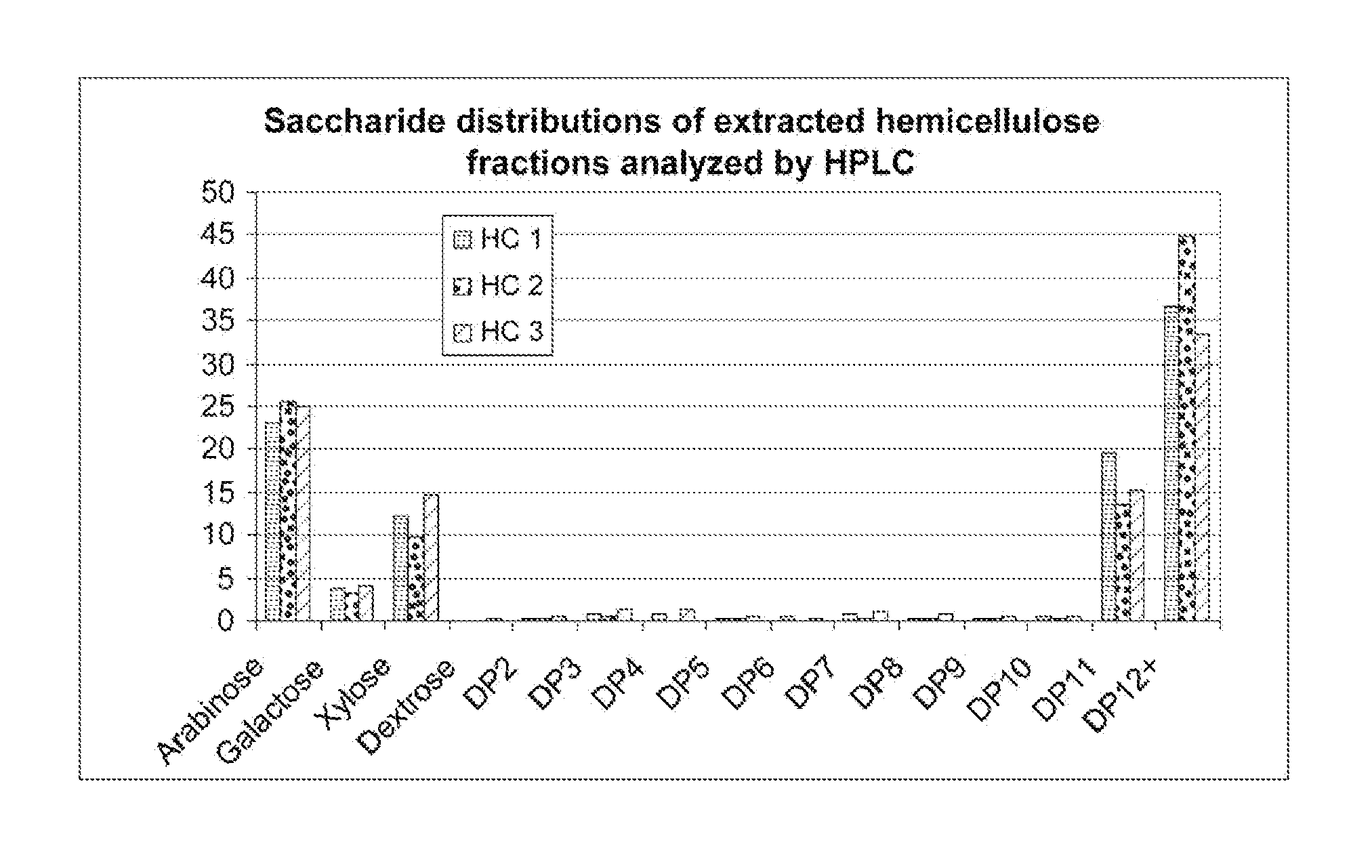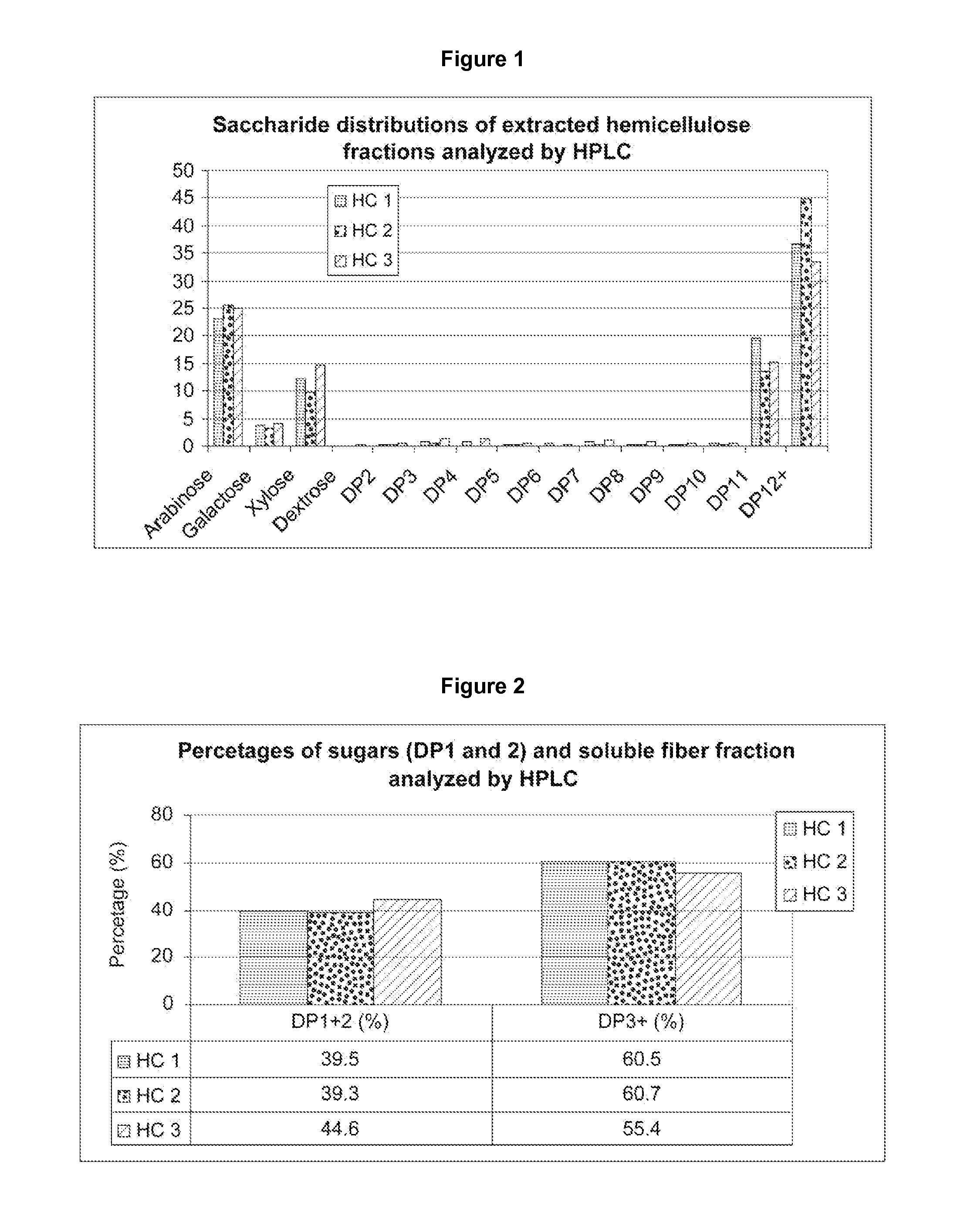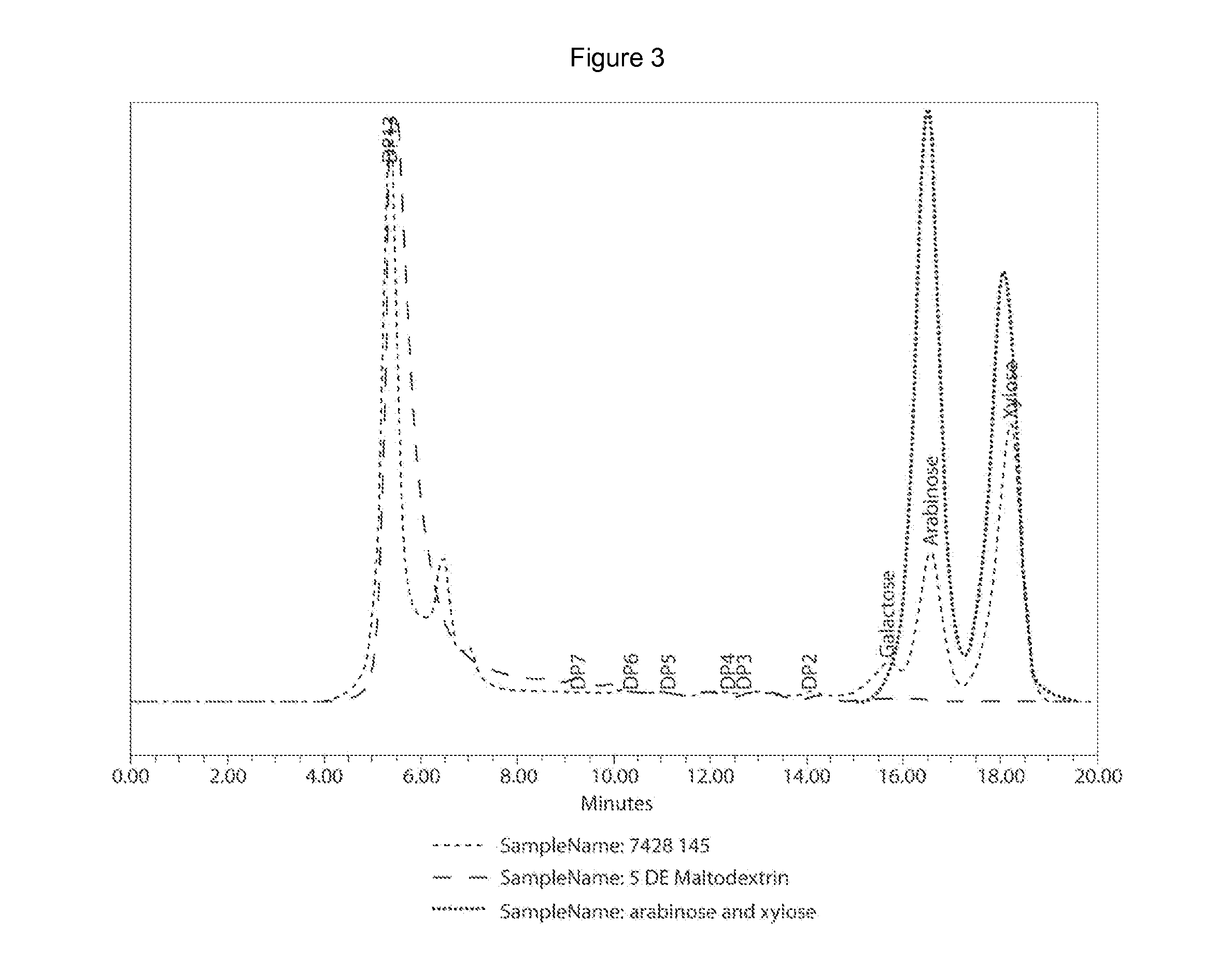Process of extraction of hemicellulose from corn fiber
a technology of hemicellulose and corn fiber, which is applied in pulping with acid salts/anhydrides, papermaking, pulp liquor regeneration, etc., can solve the problems of high cost of production, significant hydrolysis to monomers, and limitations in each of the foregoing known processes of extracting hemicellulose from corn fibers
- Summary
- Abstract
- Description
- Claims
- Application Information
AI Technical Summary
Benefits of technology
Problems solved by technology
Method used
Image
Examples
examples
[0045]The following disclosed embodiments are merely representative of the invention which may be embodied in various forms. Thus, specific structural, functional, and procedural details disclosed in the following examples are not to be interpreted as limiting.
Process of De-Starching of Corn Fiber
[0046]About 750 grams of Vetter's corn fiber with 40% dry solids (d.s.) was mixed with purified water to a total weight of 4 kg in a steel container. The fiber suspension was heated to boiling temperature (about 95° C.) on a hot plate with a Maxima digital stirrer (Fisher Scientific, Pittsburgh, Pa.) equipped with a 2-blade (45 mm diameter) stirring shaft. The pH of the suspension was adjusted to about 6.5 using a 1 N NaOH solution. About 6 mL of a 1 M CaCl2 solution was also added. Then about 6 mL of Termamyl SC DS (Novozymes North America, Inc., Franklinton, N.C.) was added to the fiber suspension and the enzymatic reaction was carried out at about 95° C. for about 1.5 hours. The fiber su...
PUM
| Property | Measurement | Unit |
|---|---|---|
| temperature | aaaaa | aaaaa |
| pKa | aaaaa | aaaaa |
| pKa | aaaaa | aaaaa |
Abstract
Description
Claims
Application Information
 Login to View More
Login to View More - R&D
- Intellectual Property
- Life Sciences
- Materials
- Tech Scout
- Unparalleled Data Quality
- Higher Quality Content
- 60% Fewer Hallucinations
Browse by: Latest US Patents, China's latest patents, Technical Efficacy Thesaurus, Application Domain, Technology Topic, Popular Technical Reports.
© 2025 PatSnap. All rights reserved.Legal|Privacy policy|Modern Slavery Act Transparency Statement|Sitemap|About US| Contact US: help@patsnap.com



